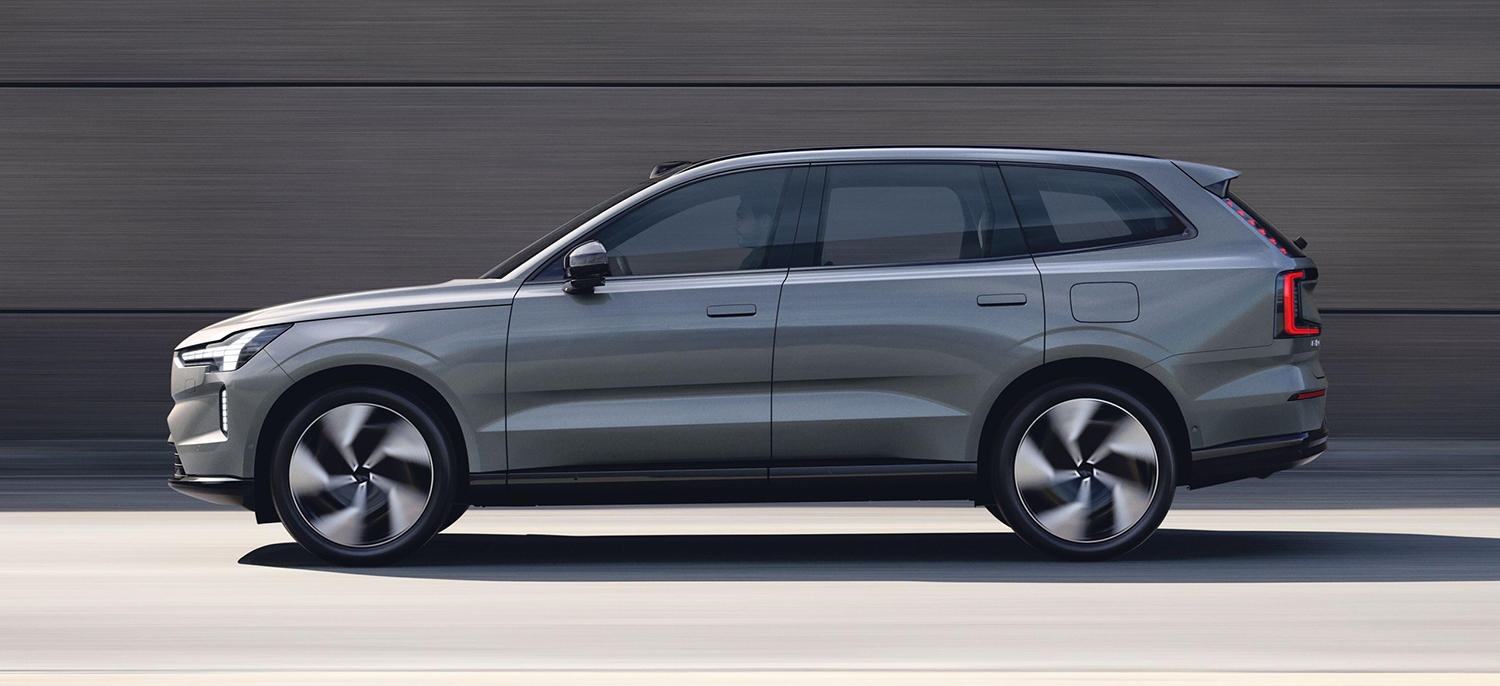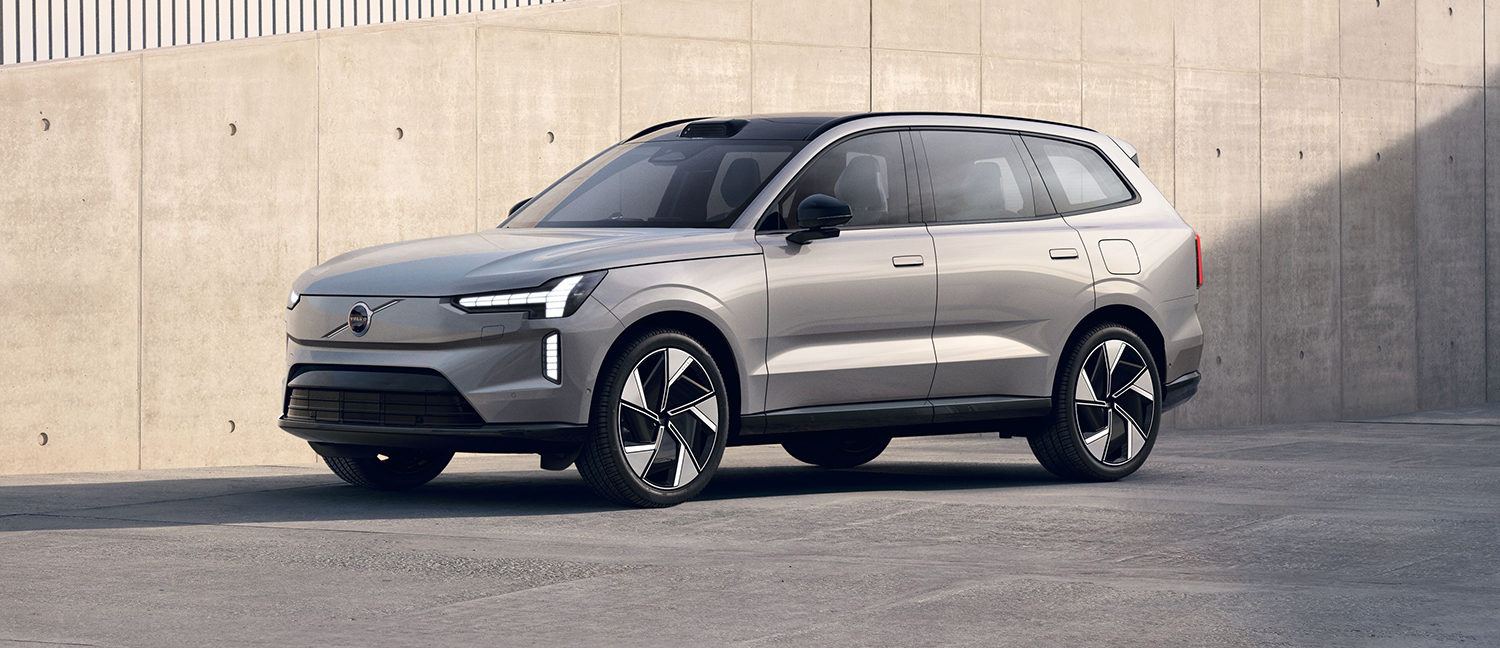After weeks of teasing, Volvo has finally unveiled its EV equivalent to the XC90, the EX90.
The first in a series of electric vehicles the Swedish brand will unveil ahead of its move to full electrification by 2030, and climate-neutrality by 2040, Volvo’s new EX90 was unveiled on home turf in Stockholm. Production though will begin at the brand’s Charleston facility in the US from next year ahead of the e-SUV’s on sale date in 2024, with secondary production also scheduled to begin at its Chinese plant in Chengdu at a later date.

2023 Volvo EX90
The third full-EV on Volvo’s line-up after the XC40 and C40, the EX90 is the first Volvo to be based on parent company Geely’s EV-dedicated SPA2 architecture, also at the heart of the new Polestar 3.
Two versions of the EX90 will be launched, with both powered by a dual-motor all-wheel drive setup. The Twin Power example produces a combined 408 hp and 568 lb ft of torque, while the more dynamic Performance model offers 517hp and 671 lb ft of torque. A 111 kWh is mated with the drivetrain on both models.

2023 Volvo EX90
While the top speed on both is limited to 180 km/h, 0-100 km/h sprint times are still commendable, despite the seven-seater SUV weighing upwards of 2,818 kg. The Twin Motor hits the ton in 5.9 seconds, the Performance shaving a further second off that. Both boast a towing capacity of 2,200 kg.
Up to 600 km of electric range is available on a single charge for the Twin Motor, while the Performance still boasts an impressive, potential 590 km. Top-ups between 10 and 80 per cent are said to take less than 30 minutes, and, while not immediately available from launch, bi-directional charging will be incrementally introduced in due course, the EX90 featuring “the necessary hardware.”

2023 Volvo EX90
Significantly, the EX90 also supports Plug-and-Charge, meaning charging will begin as soon as the cable is docked, with payment sorted ad-hoc.
Alongside its electric propulsion, the EX90’s design – inspired heavily by the Concept Recharge unveiled in June last year – has been honed for aerodynamic efficiency. Hence the blanked-off front grille – a Volvo EV staple – and the slightly more rounded nose. The EX90 is also slightly longer and wider than the XC90, and sits lower to the ground, all of which combine for an impressive drag co-efficient of juts 0.29 cd.

2023 Volvo EX90
Unsurprisingly, the EX90 is primarily being pushed as the brand’s new safety standard, featuring as it does an “invisible shield of safety” courtesy of the new LiDAR system – which uses an abundance of sensors and cameras mounted on the roof lip to clearly ‘spot’ obstacles on the road from greater distances and, if necessary take avoiding action – and new cabin sensors that determine when or whether the driver is distracted or getting tired. The latter in particular has been specifically designed to ‘learn’ its drivers’ habits over time, adapt accordingly, and thus become “smarter and safer over time.”
Read more: Volvo previews driver-focused centre touchscreen on EX90
Over the air updates means the EX90’s infotainment system – accessed via a 14.5-inch, portrait touchscreen that replaces all switchgear on the dashboard – will also be regularly updated. Both the touchscreen and driver display have been orientated and configured to provide only the necessary information the driver well need in order to keep their eyes on the road. In a neat touch, the EX90 also comes with phone key technology as standard, meaning the drivers’ smartphone effectively becomes the key fob. The Volvo Cars app also helps locate universal charging points more quickly.

2023 Volvo EX90
In accordance with Volvo’s sustainability goals, and alongside the new ‘Nordico’ upholstery, the EX90 build is apparently made up of 15 per cent recycled steel and 25 per cent recycled aluminium as well as 48 kg of recycled plastics and bio-based materials.

2023 Volvo EX90
North American prices for the new EX90 have not yet been confirmed, though previously-announced UK prices suggest the Twin Motor could start from $147,500 while the Twin Motor Performance could be upwards of $154K.






